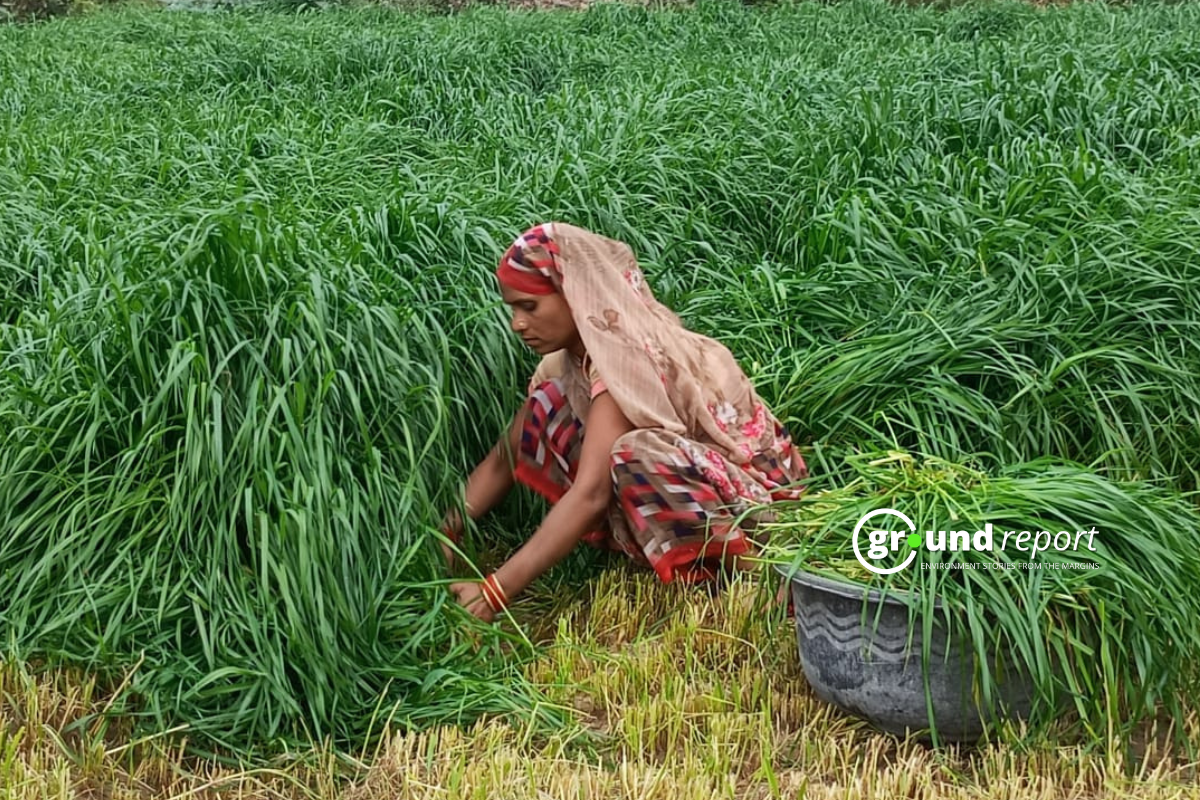The carbon footprint of milk production in India is estimated to range from 0.9 to 1.5 kg of CO2 equivalent per liter of milk produced, influenced by various factors such as livestock management practices, feed quality, and energy use. A significant contributor to this footprint is enteric fermentation, where cattle produce methane during digestion.
Additionally, the production and transportation of feed, which involves energy-intensive processes like fertilizer application and irrigation, further add to emissions. Manure management also plays a role, as improper handling can release methane and nitrous oxide. Energy consumption in dairy operations, including milking, cooling, and transportation, increases the carbon footprint, particularly when fossil fuels are used.
Lastly, land use changes, such as deforestation for pasture or feed crops, contribute by releasing stored carbon. To mitigate the carbon footprint, improving livestock management, enhancing feed efficiency, optimizing manure management, and adopting renewable energy sources are essential steps for promoting sustainable dairy farming in India.
The term ‘carbon footprint’ refers to the total amount of greenhouse gasses, primarily carbon dioxide (CO2), that are emitted directly or indirectly by an individual, organization, event, or product throughout its lifecycle. It is typically measured in terms of carbon dioxide equivalent (CO2e), which accounts for the different global warming potentials of various greenhouse gasses.
Niranjan Karade, Team leader at innovation and project management cell of National Dairy Development Board (NDDB) talked about the climate-smart initiatives for sustainable dairying. At the Climate Week event organized by the Center for Science and Environment (CSE) this week, Karade argues,
“If the milk productivity is improved , the carbon footprint per kg of milk decreases.”
What is strawlage technology?
Strawlage technology involves the fermentation and preservation of straw and other fibrous crop residues to create high-quality feed for livestock. Similar to silage production, this process entails chopping straw and packing it into airtight silos or bags for anaerobic fermentation, which enhances its nutritional value and digestibility. By improving the palatability and nutrient content of straw, strawlage makes it more suitable for ruminants like cattle and sheep.
This method allows for extended storage without significant spoilage, providing a reliable feed resource during times when fresh forage is scarce, such as in winter or dry seasons. Additionally, using straw—often an agricultural by-product—can lower feed costs for farmers and promote sustainability by reducing waste. Overall, strawlage technology offers an effective way to enhance livestock nutrition while contributing to more sustainable agricultural practices.

Nitin Tyagi, Principal Scientist, Animal Nutrition Division and In-Charge Livestock Research Center ICAR-National Dairy Research Institute, Karnal at CSE’s Anil Agarwal Environment Training Institute in Nimli, Rajasthan points at a few nutritional strategies to reduce methane emissions from enteric fermentation:
“Increasing dietary fat content, providing higher quality forage or preparing silage Providing unconventional feeds, optimizing protein content, providing additives and using anti methanogens can help in reducing remissions.”
Silage vs fodder feeding
Silage feeding is often considered superior to fodder feeding for several reasons. First, the fermentation process used to produce silage preserves vital nutrients, making it a rich source of energy and protein for cattle. This method also reduces waste, as properly stored silage has a lower spoilage rate compared to fresh fodder.
Silage feeding is generally more convenient, requiring less frequent harvesting and feeding, which can reduce labor demands. While the initial investment in silage production may be higher, the long-term benefits of reduced waste, consistent nutrition, and efficient use of lower-quality forage make it a cost-effective choice for many livestock operations.
Fodder feeding, while beneficial in some contexts, has several drawbacks that can make it less ideal for livestock operations. One major issue is the potential for nutritional imbalances, as the quality and nutrient content of fodder can vary based on the type of forage and its growth stage, potentially leading to deficiencies that impact animal health and productivity. Additionally, relying solely on fodder limits diet diversity, which is crucial for optimal livestock performance.
Furthermore, fresh fodder can harbor pathogens and pests, increasing disease risk among livestock. Its production is heavily dependent on unpredictable weather conditions, and unlike silage, it has a short shelf life, complicating feed management during lean seasons. Overall, these challenges make fodder feeding less favorable compared to other methods like silage or strawlage in certain farming systems.
Silage also maximizes biomass utilization by allowing for the use of various forage crops, including those unsuitable for direct grazing. Overall, silage feeding supports more sustainable land use practices by reducing the area needed for fodder crops and improving soil health, thereby contributing to the overall sustainability of agricultural systems.
Impacts of climate change
Karate in his presentation highlighted the impacts of climate change on cattles and the impact of heat stress on diet and milk production of the cattle. He argued that rising temperatures can lead to heat stress in dairy animals, which negatively affects their health, reproduction, and milk production. Cattle are particularly sensitive to temperature changes, and prolonged heat stress can result in lower feed intake, reduced fertility, and decreased milk yields.
Additionally, changes in rainfall patterns and increased frequency of droughts can lead to water scarcity, impacting both livestock hydration and the availability of feed crops. Insufficient water supply can hinder forage growth, forcing farmers to rely on costly alternatives or reduce herd sizes.
Farmers may face increased costs associated with managing the effects of climate change, such as investing in cooling systems, purchasing supplemental feed, or implementing water-saving technologies. These financial pressures can affect the overall viability of dairy operations, especially for smallholder farmers.
Globally, the dairy sector is estimated to contribute approximately 2% to 3% of total greenhouse gas emissions. However, this percentage can vary by region based on livestock management practices, production systems, and the overall size of the dairy industry within each country’s agricultural sector. According to a World Resource Institute report, total emissions due to the dairy sector in India was only (0.25/49.8) or 0.5% of Global GHG emissions. Experts believe this too can be reduced and prevented with the effective measures of cattle care and milk production.
Support us to keep independent environmental journalism alive in India.
Follow Ground Report on X, Instagram and Facebook for environmental and underreported stories from the margins. Give us feedback on our email id greport2018@gmail.com.
Don’t forget to Subscribe to our weekly newsletter, Join our community on WhatsApp, Follow our Youtube Channel for video stories.
Keep Reading
Why is Lesser Florican nearing extinction in Madhya Pradesh?
Gujarat: 38 Animals, birds die at Statue of Unity complex in 2 years
18 billion animals sacrificed yearly without making it onto someone’s plate: Study
Living planet report: Global populations of wild animals declined 69% in 50 years









